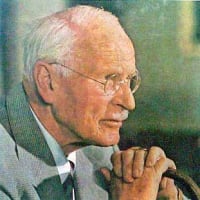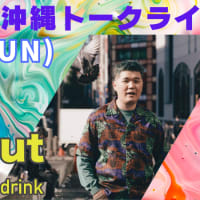
Whoever fights monsters should see to it that in the process he does not become a monster.
~Nietzsche -
怪物と戦う者は、その過程で自分が怪物にならないように気をつけなければならない。
~ニーチェ -
聖ゲオルギウスの竜からの王女の救出

聖ゲオルギウスの伝説は、英雄ペルセウスの流れをくみ、このテーマのもとに中世末から近世に様々な作品が描かれた(日本では、八岐大蛇(ヤマタノオロチ)を倒し、草薙 剣(くさなぎのつるぎ)と櫛名田比売(くしなだひめ)を得た須佐之男命(すさのおのみこと)が対応。
英雄が囚われの女性を救出するために戦う怪物(竜)を、ユングは基本的には超個人的な恐るべき母と考えたのに対して、ノイマンはは母(自然)と同時に恐るべき父(文化:集合的意識)でもある、と考えた。つまり、この戦いによって、固定化した古い価値基準(父)を否定して、再生のの近親相姦的退行が敷衍され、恐るべき母の殺害による囚われの女性の(「たましい」)との結合が可能になる。これは、古代の豊穣儀礼の発展形態であり、これによって英雄はたましいの創造性をわがものとする。(ノイマン1954)
ユング心理学辞典P23・ アンドリュウ・サミュエルズ著 その他。
日本語からの機械翻訳です。
The Rescue of the Princess from the Dragon of St. Georgius
The legend of St. Georgius follows in the footsteps of the hero Perseus, and this theme was depicted in various works from the late Middle Ages to the early modern period (in Japan, it corresponds to Susano-no-mikoto, who defeated the Yamata-no-orochi (the eight-forked serpent) and obtained the Kusanagi sword and Kushinada-hime.
The monster (dragon) that the hero fights to rescue the captive woman was considered by Jung to be basically a hyper-personal fearsome mother, while Neumann considered it to be both a haha (nature) and a fearsome father (culture: collective consciousness). In other words, this battle negates the fixed old value standard (the father) and lays out the incestuous regression of rebirth, allowing for the union of the captive woman ("tamashii") with the murder of the fearful mother. This is a development of the ancient fertility ritual, whereby the hero makes the creativity of the soul his own. (Neumann 1954)
Jungian Dictionary of Psychology, p. 23, by Andrew Samuels and others.
This is a machine translation from Japanese.
聖ゲオルギオスと竜"我々が最も必要とするものは、我々が最も探したくないところで見つかるだろう。"
https://ameblo.jp/spirit-15/entry-12661228624.html



















